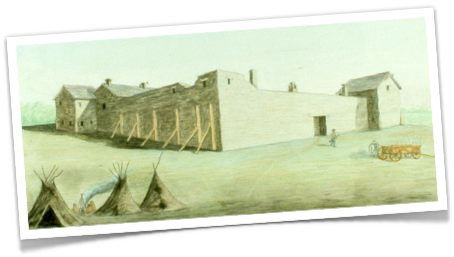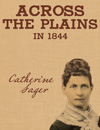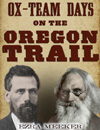Fort Hall

Ft. Hall was an important stop for the emigrants in the trail's early years. Yet few who passed through this fort knew the strange reason it was built.
Nathaniel Wyeth began with a grand moneymaking scheme. He and 70 men planned to haul supplies to the 1832 fur trappers rendezvous, reap huge profits, then push west to the Columbia River, where they hoped to set up a fishery and export salmon to Hawaii and New England.
From the beginning almost nothing went right. After months of travel, Wyeth arrived at the rendezvous, but no one would buy his goods. Frustrated and disillusioned, his last ditch plan was to build a fort nearby. Its purpose: to serve as a base of operations to get rid of Wyeth's excess supplies by selling them to nearby tribes and trappers.
When Ft. Hall was completed in 1834, it stood as the only American outpost in the entire Oregon country.
Emigrant Osborne Russell:
"On the fourth of August, the fort was completed. And on the fifth, the stars and stripes were unfurled to the breeze at sunrise, in the center of a savage and uncivilized country over an American trading post."
But the fort did not stay American very long. Wyeth's other ventures failed, and by 1837, he had sold the fort to the huge Hudson's Bay Company. The British flag now flew over Ft. Hall. And the British made a point of discouraging the American pioneers from traveling on to Oregon. It was a subterfuge that worked for a few years at least.
Emigrant James Nesmith:
"Capt. Grant, then in charge of the Hudson Bay Company at Ft. Hall, endeavored to dissuade us from proceeding further with our wagons, and showed us the wagons that the emigrants of the preceding year had abandoned, as evidence of the impracticability of our determination."





